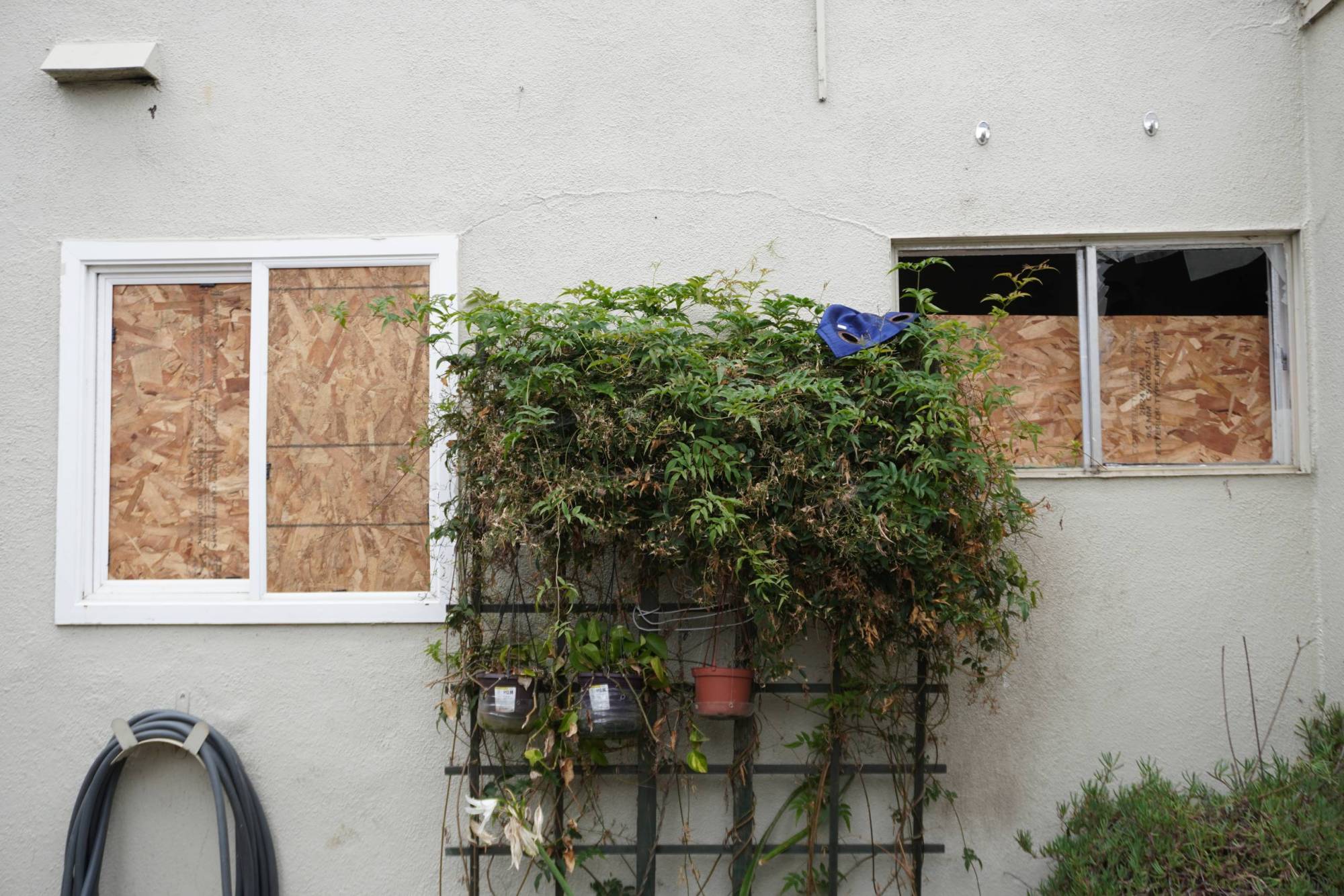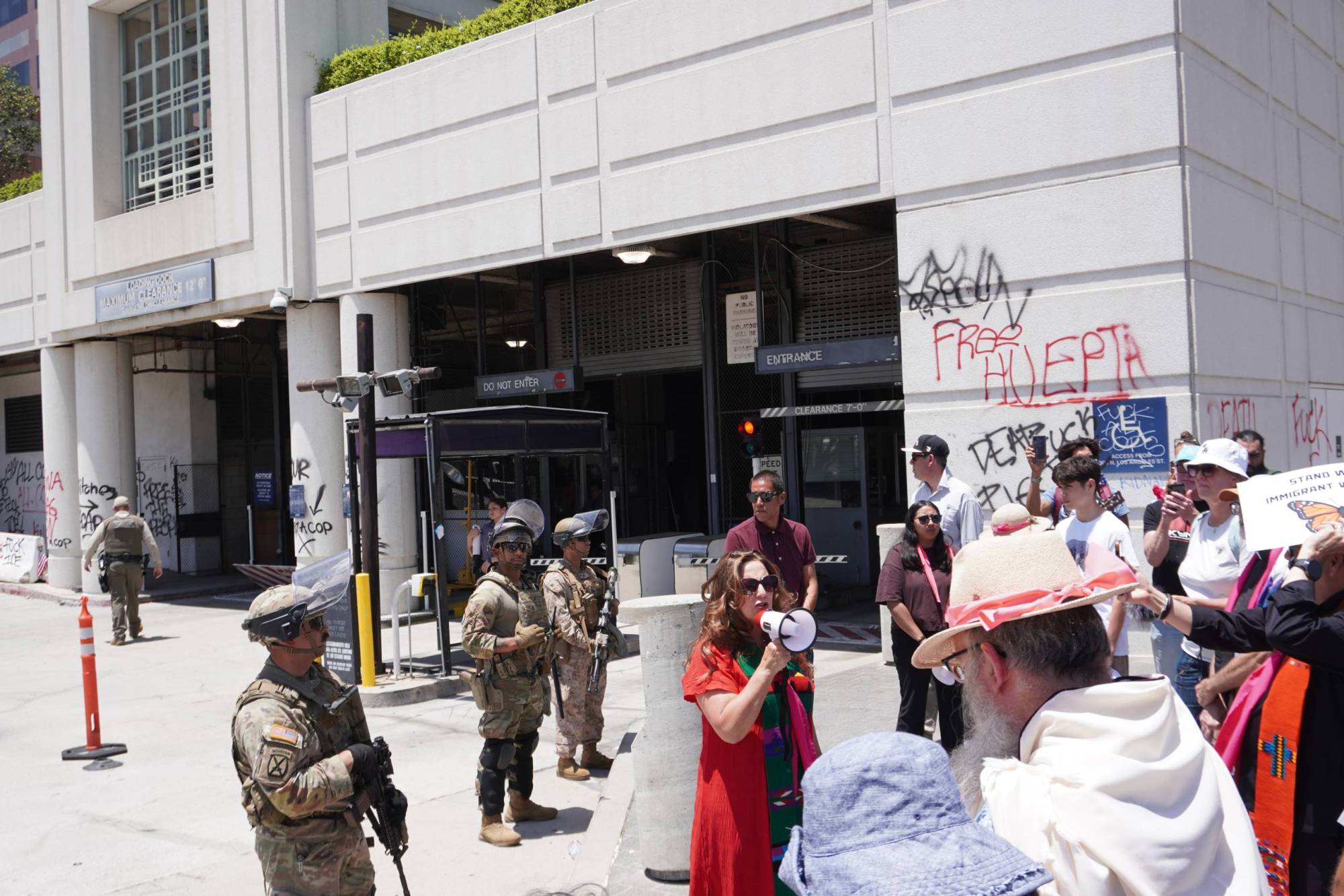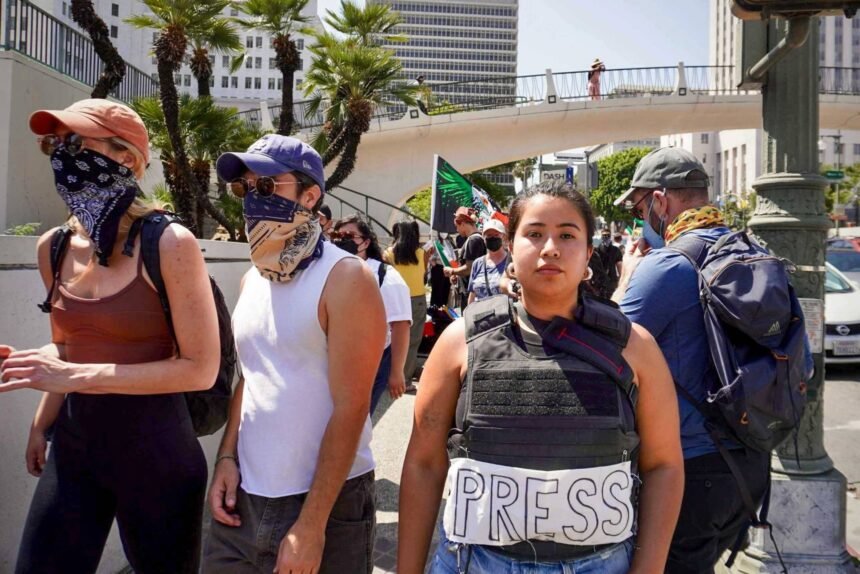Aisha Wallace-Palomares was one of the first journalists to interview Robles about what happened to him and his parents. After graduating from the UC Berkeley Graduate School of Journalism in May, she moved back to her hometown of Escondido to cover ICE raids in the North County area of San Diego.
Her reporting on her Instagram has been picked up by outlets like Marie Claire and L.A. Taco, where she broke a major story about Adrian Martinez, a U.S. citizen arrested and held in ICE detention. She’ll be starting a California Local News fellowship at L.A. Taco next month, and her work on this topic will be featured in an upcoming episode of Reveal, from the Center for Investigative Reporting.
Wallace-Palomares spoke with The California Report Magazine’s host, Sasha Khokha, about her work to produce bilingual coverage about increased immigration enforcement in Southern California.
What follows are excerpts from their conversation, edited for brevity and clarity.
On the need for bilingual, culturally-relevant coverage of ICE activity in her hometown:
During my time in journalism school, I learned how important hyper-local news is.
I’m from Escondido, which is a majority Latino community in North County San Diego, and there’s not a bilingual news source that covers local news. In fact, the local newspaper here recently featured an editorial encouraging the federal government to “Raid away!” saying that that’s “what the people voted for.”

I really wanted to cover ICE arrests happening in my community and make that accessible to a bilingual audience. I’ve been finding stories on community forums, Facebook groups. People DM me when they’re seeing federal immigration agents.
On verifying reports of ICE activity with federal agencies:
In Kevin Robles’ case, I was able to verify that ICE had a warrant for his father, who ICE said had a criminal record. Both of Kevin’s parents [were] taken into custody [and are still there].
Despite the violence captured in a video a neighbor filmed of that raid, an ICE spokesperson emailed me that the agency “followed their training to use the minimum amount of force necessary to resolve the situation.”

When I get a tip, one of the things I can do is go to the scene and see if I can talk to any of the agents there. [Sometimes] there are no agency identifiers on any of the vehicles, or on the agents except for vests that say ‘Police.’
At the same time, I’ve noticed that on a lot of community forums, people are sharing possible ICE sightings to warn community members that federal agents are doing roving patrols. But a lot of times people think it’s ICE and it’s not. That could spread misinformation and more fear. So it’s important to confirm these tips.
On reporting on community patrols, grassroots groups monitoring for ICE presence:
I’ve done a few ride-alongs with Union del Barrio here in Escondido, and with the Human Rights Council based out of Oceanside. They drive through the streets looking for ICE so that they can alert community members.
The volunteers really know their city and really care about their community. They’re getting up and going on these patrols before work at 5:45 a.m.

On educating the immigrant community about how to talk to journalists:
One of the things I noticed early on in my reporting is that many people in the Latino community have never interacted with journalists. I felt like I had a responsibility to make sure that people that I spoke to understood what it meant to talk to a journalist.







